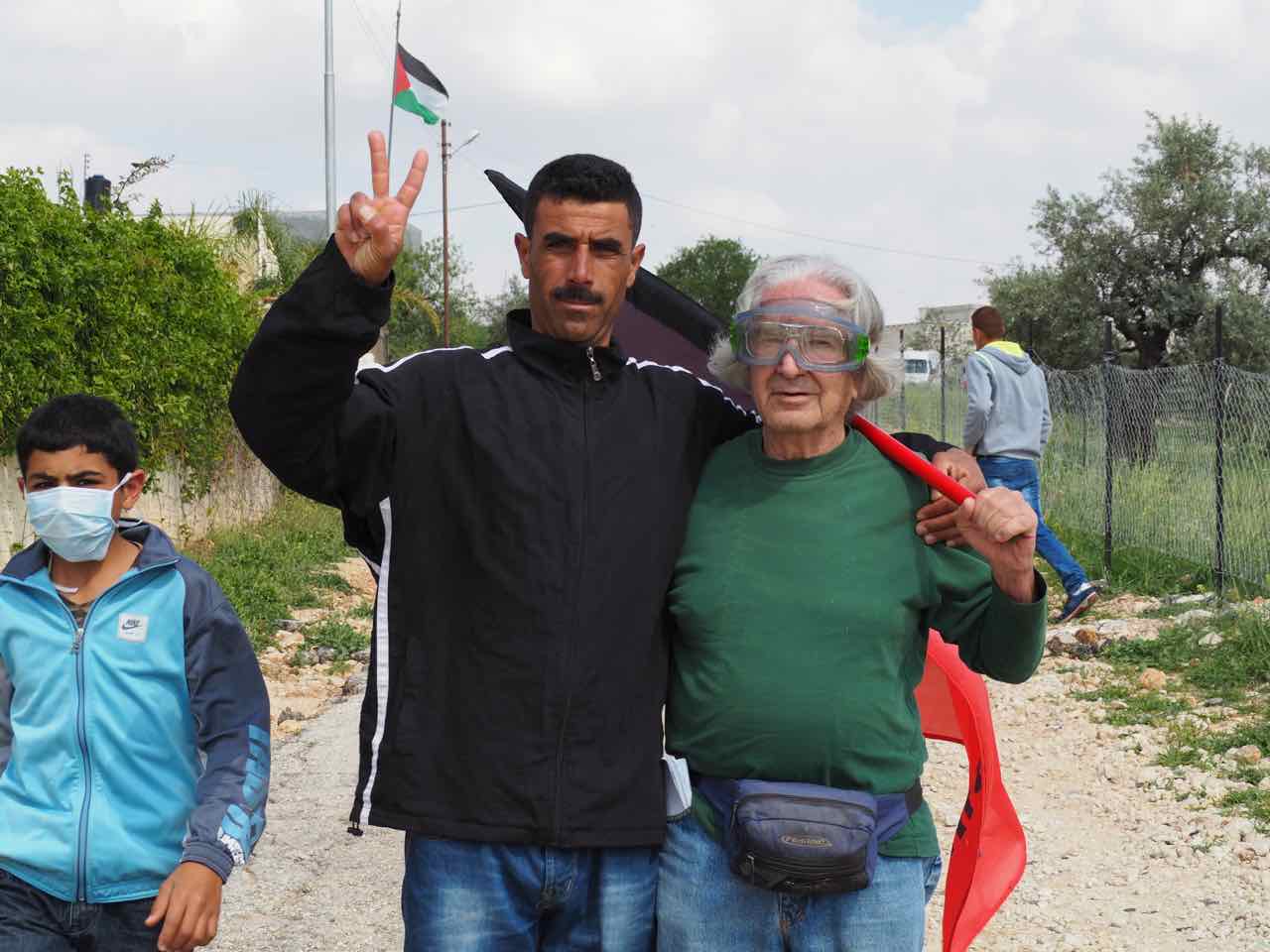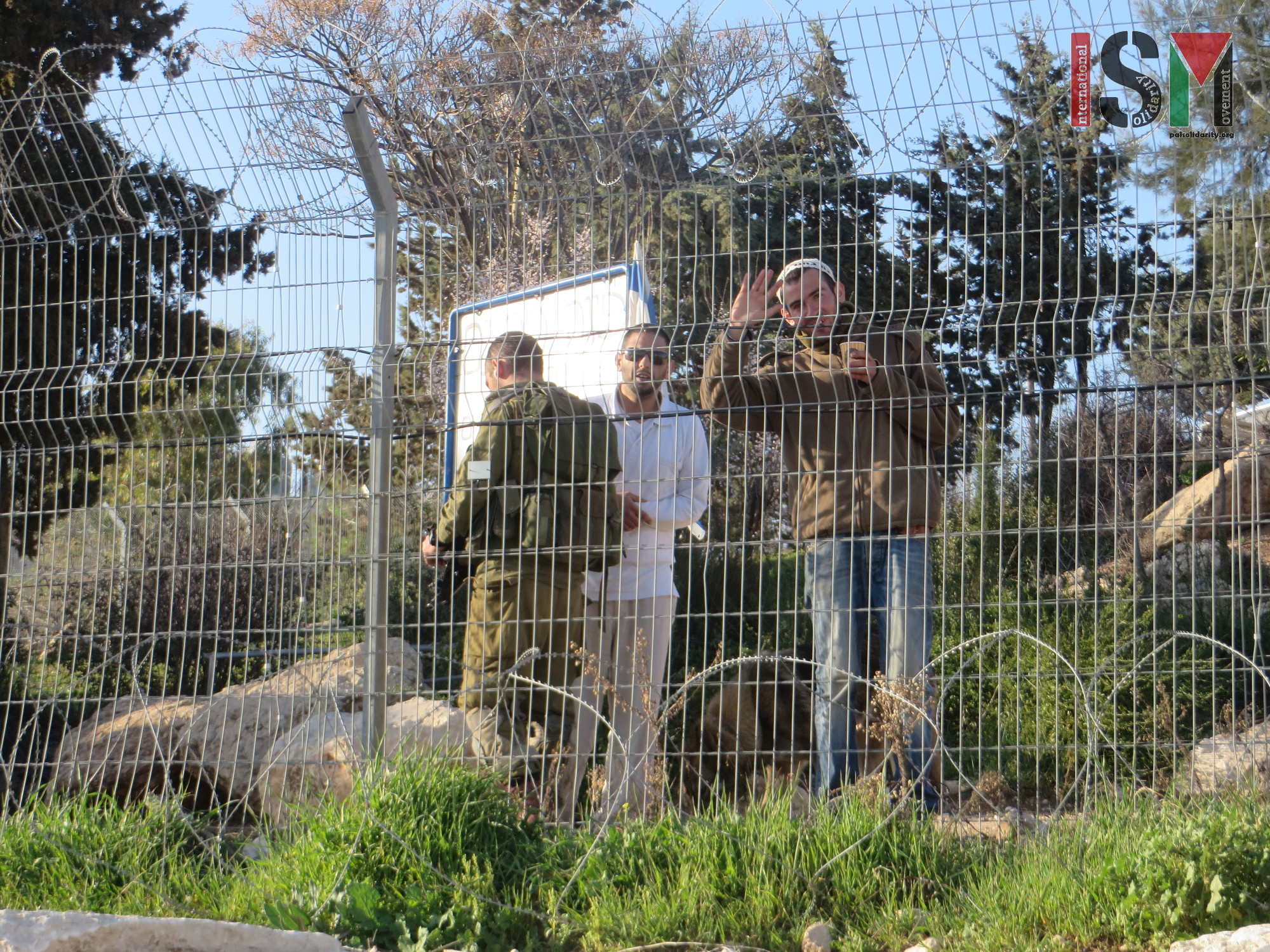Category: Reports
-
Peaceful demonstrators tear gassed by Israeli army at Bil’in
4th March 2016| International Solidarity Movement, Al-Khalil team | Bil’in, occupied Palestine Today, groups of Palestinians, Israelis and other activists from around the world marched together in solidarity to oppose the zionist regimes annexation wall and illegal settlement of Modin Ilit. The settlement has been built on part of the once Palestinian land from the…
-
Illegal settlers of Kiryat Arba abuse Palestinians and volunteers
3rd March 2016| International Solidarity Movement, Al-Khalil team | Hebron, occupied Palestine On Saturday, 27th February 2016, as two ISM volunteers were walking on Prayer Road, right next to the illegal Kiryat Arba settlement in occupied al-Khalil (Hebron), they were attacked, threatened and insulted by settlers while Israeli forces were watching. When the internationals were passing…
-
Bogus arrest of 12 year old boy in Hebron
3rd March 2016 | International Solidarity Movement, al-Khalil team | Hebron, occupied Palestine On the 28th of February around 4:00pm, 12 year old Palestinian boy, Sayed Seder was arrested by 10 heavily armed Israeli soldiers whilst playing football with his friends on the street in front of his family home. The Israeli army claim that…



